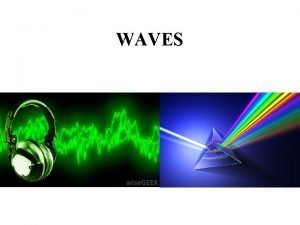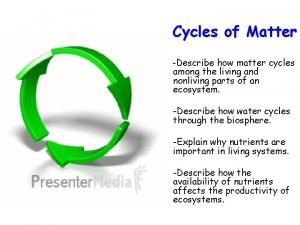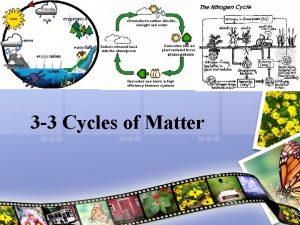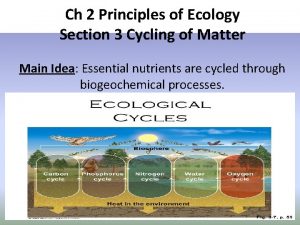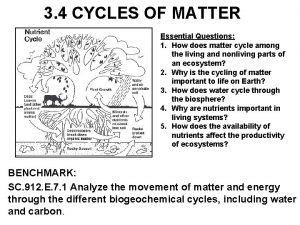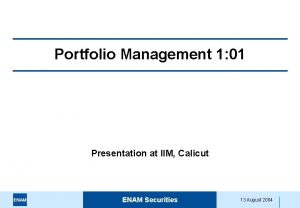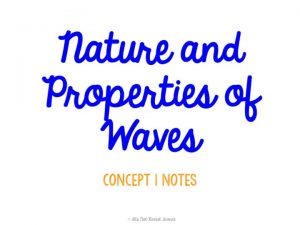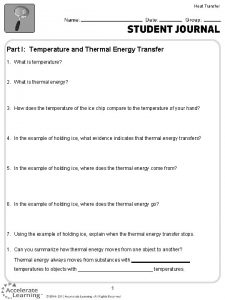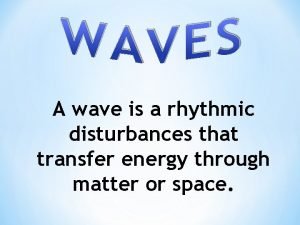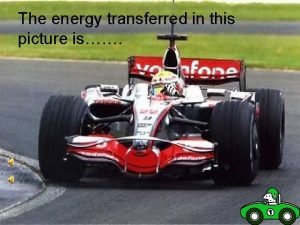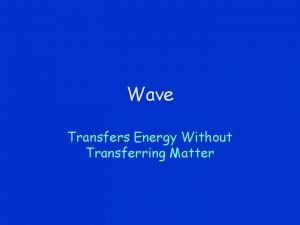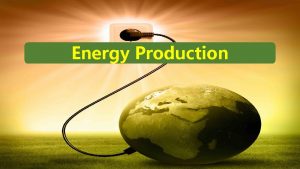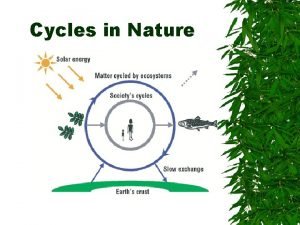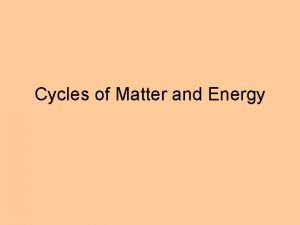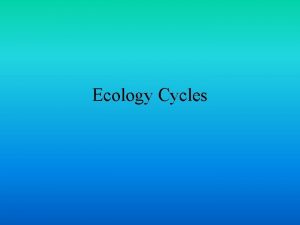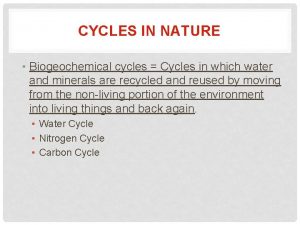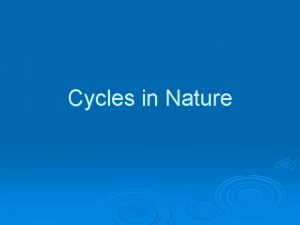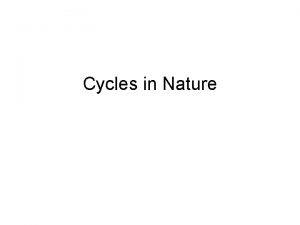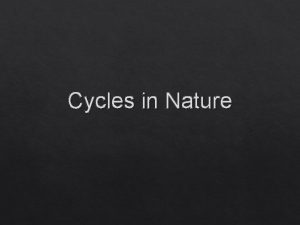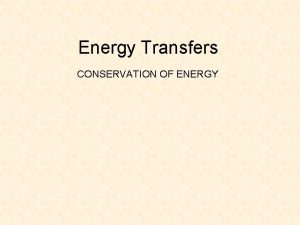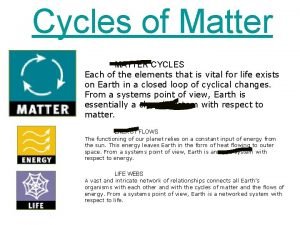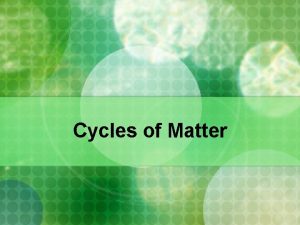Cycles in Nature Energy transfers Cycles of Matter
















- Slides: 16

Cycles in Nature Energy transfers

Cycles of Matter Earth’s biosphere contains a fixed amount of water, carbon, nitrogen, oxygen and other materials needed to support life. These materials cycle through out the environment and are constantly reused by different organisms on Earth. Energy transfers allow for the cycles to occur on Earth.

Important Cycles Three very important cycles in Earth are: �Hydrologic cycle �Carbon cycle �Nitrogen cycle

Hydrologic cycle The hydrologic cycle describes the different processes in which water moves from the surface of the Earth to the atmosphere and back to the surface again.

Hydrologic Cycle Processes in the water cycle: Evaporation Transpiration Condensation Precipitation

Evaporation is the process in which water turns into water vapor and is released in the atmosphere. o During evaporation solar energy heats up the water on the surface of the Earth. o The water reaches it’s boiling point and evaporates. o The thermal energy of the water Molecules increases as it changes it’s state of matter. o

Transpiration is the process in which water evaporates directly from the leaves of plants. During this process energy is also gained. Radiant energy from the sun heats up the water and the water molecules gain energy as they changes states of matter into gas.

Condensation o o o Condensation is the process in the water cycle when gas turns into liquid. During condensation energy is lost as water vapor cools and changes states into liquid form. Clouds are examples of water vapor reaching cold temperatures in the atmosphere and changing states of matter.

Precipitation is the process in the water cycles in which water returns to the surface of the Earth in the form of hail, ice, snow or rain. During this process liquid water in clouds becomes heavy and falls back down to the surface.

Nitrogen Cycle Another important cycle in our biosphere is the Nitrogen Cycle. Nitrogen is important for all living things and it’s naturally abundant in the atmosphere. However not all living organisms can take in nitrogen directly from the air. The nitrogen cycle moves nitrogen through the biosphere and allows for different organisms to obtain the important element in different forms.

Nitrogen Cycle Nitrogen is taken in by bacteria in the soil through a process called nitrogen fixation. This type of bacteria forms nitrogen compounds that certain plants need. Plants absorb the nitrogen compound through their roots and use it as needed. Animals obtain nitrogen by eating these plants and nitrogen can be released back into the soil or atmosphere when these animals die and decay.

Nitrogen Cycle Through out the nitrogen cycle energy is gained and lost as nitrogen is transferred from the atmosphere and soil to plants and animals and then released again to the atmosphere.

Carbon Cycle Another important cycle in our biosphere is called the carbon cycle. This cycle describes how carbon molecules move between the living and non-living factors of the Earth.

Carbon Cycle Carbon is naturally found in all living things and in the atmosphere as carbon dioxide. Carbon is released into the biosphere through decaying matter and human activity and it is removed from the atmosphere by plant activity. .

Carbon Cycle: Photosynthesis Plants remove carbon dioxide from the atmosphere and release oxygen during photosynthesis. Plants gain energy as they use water, radiant energy and CO 2 to produce sugar molecules. These molecules then release energy and oxygen into the atmosphere as cellular respiration.

Carbon Cycle: human activity carbon is also released in to the atmosphere through human activities. Fossil fuels such as gasoline, coal and heating oil release energy rich carbon based molecules when burned.
 Repeating disturbance
Repeating disturbance Ecological succession
Ecological succession Water cycles of matter
Water cycles of matter 3-3 cycles of matter
3-3 cycles of matter Lesson 2 cycles of matter answer key
Lesson 2 cycles of matter answer key 4 cycles of matter
4 cycles of matter Enam securities portfolio
Enam securities portfolio Waves are repeating disturbances that transfer
Waves are repeating disturbances that transfer A rhythmic disturbance that carries energy
A rhythmic disturbance that carries energy Types of thermal energy transfers
Types of thermal energy transfers A rhythmic disturbance that transfers energy
A rhythmic disturbance that transfers energy A wave is a disturbance that transfers energy. *
A wave is a disturbance that transfers energy. * A disturbance that transfers energy
A disturbance that transfers energy A wave is a disturbance that transfers energy
A wave is a disturbance that transfers energy Energy transfer in flashlight
Energy transfer in flashlight 10 energy rule
10 energy rule A wave transfers
A wave transfers
